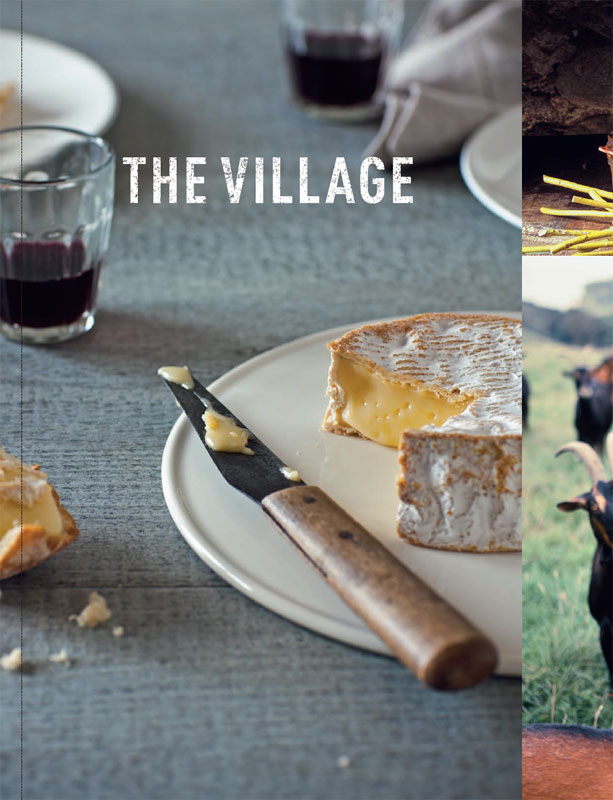
THE VILLAGE
France is renowned for its high-end, modern gastronomy and complex dishes, but there is another side to French life – in the countryside, the village and the average home where food is more rustic and traditional. It follows the seasons and generally features what is available in the region. The food is not fussy but nourishing and delicious, and perfected by generations of home cooks. This is where classic French dishes like cassoulet, coq au vin, beef bourguignon and lamb navarin have come from, along with beautifully simple recipes like crique Ardèchois.
One home kitchen we were lucky enough to be invited into was that of bestselling cookbook author and chef Stéphane Reynaud, who lives with his family in the village of Saint-Agrève in the mountainous area of the Ardèche in south-east France. He’s a firm believer that the soul of French cooking is in the home and in the regions of France. He has a restaurant in Paris and commutes each week from the village. It’s a place where he finds solace and inspiration, and where he delights in getting back to basics like curing his own jambon sec (air-dried ham) using wild herbs and pine needles, making butter, and spending afternoons with family and friends.
The weekend we visited, Stéphane was rallying the troops to make a regional speciality – saucisse de couenne. This is a rustic sausage made with coarse pork mince flavoured with smoky pork skin and fat that is roasted over a fire of pinecones. It was a glorious moment joining Stéphane as everyone, especially the kids, got into roasting the pork skin and later piping out the delicious sausages. They were baked and savoured with a couple of good bottles of wine from Stéphane’s extensive underground cellar, plus a cheese board the size of a cart wheel with fifteen different cheeses and some wonderful sourdough. And that was just for starters!
In the warm, open-plan kitchen a huge pot-au-feu was scenting the air, and the atmosphere combined with the tantalising aromas made us feel we had tapped into the essence of French life. It was totally food-centric, but in the most unpretentious way. Stéphane was incredibly generous to let a film crew into his home for a day, and it added up to one of the great days of our lives.
Like Stéphane curing his own ham, there can be a lot of DIY surrounding life in the country. Some of the joys of being outside a city include the ability to grow some of what you eat, whether fruit, vegetables or herbs; keep chickens and other animals; and, depending on the region, forage for wild food in the forests, along the shoreline, or in the local rivers and streams. The essence of country life is to make the most of what’s available, and to waste nothing – and why would you when cep or chanterelle mushrooms await you in the forest, plums are blushing on the trees, or there are wild snails to gather for a feast?
Dany Chouet introduced many Australians to French food at her restaurants in Sydney and the Blue Mountains and now lives in Périgord in south-west France. She revels in the different foods of each season, including ripe summer tomatoes, plump prunes from nearby Agen that are a year-round staple, and a more unusual regional delight – the lamprey. This unique freshwater fish is often likened to a baby eel and has a short season in spring. ‘When the lamprey come up the Dordogne River to lay their eggs, and the leeks in the marché [market] are huge, it’s time to faire la lamproie,’ she says.
In her beautiful restored farmhouse with its stylish tiled kitchen, Dany enjoys cooking recipes handed down through the generations, much of the produce sourced from her own garden. This is the style of living that many of us aspire to – regional, seasonal, delicious.